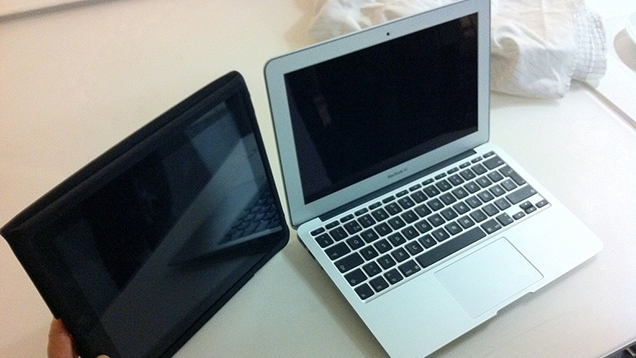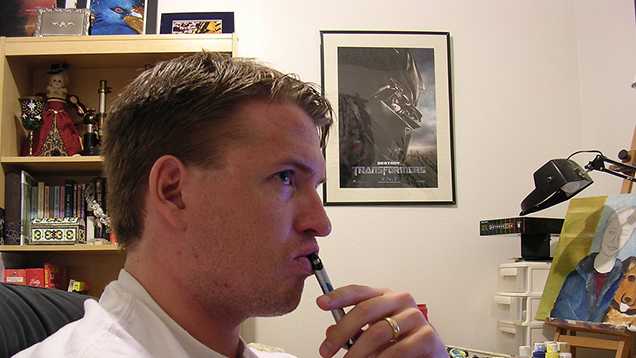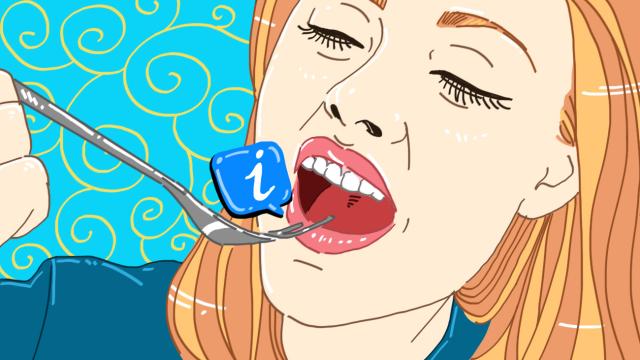Some of us watch a lot of TV. We may read more articles than we need to (the irony is not lost on me here). We go on Twitter to kill our boredom. By consuming information more carefully and treating it like food for our minds (which it is), we can do it in a way that actually works without completely cutting it out of our lives.
Pictures: Daniela Vladimirova, TeppoTK, Dana Voss, Matthew Frederickson, Juanedc, David A Ellis.
Create A Separate Account (or Use A Separate Device) for Consuming Information

We get distracted much more easily while still managing to feel productive because we use the same devices for work and play. In order to draw a clearer line between these activities, author and marketer Seth Godin suggests using different devices for work (such as a laptop) and play (such as an iPad).
For those who don’t have a second device, Guiding Tech founder Abhijeet Mukherjee suggests creating different user profiles on your computer — one for work and one for play. On your work profile, you can block distracting websites. If you use your phone for both work and play, here’s how you can remove distractions for iOS and Android devices.
Similarly, you can keep your work inbox as clear as possible by creating a separate email address for subscribing to email newsletters and updates. You may also want to organise these newsletters by automatically labelling incoming mail. Creating distance between all this information means you don’t tempt yourself into unintended binges.
Information Sets the Stage for What You’re About to Do

Vegetables may make you feel light, whereas a heavy beef roast may put you into a food coma. A cup of coffee may wake you up. A glass of wine may relax you. Much like food and drink, the information and media we consume affects the way that we feel after we consume it.
For example, if you want to get excited about your afternoon’s work, it may be more helpful to listen to an inspiring talk or an interview with one of your heroes rather than catch up on the news. If you’re about to go to bed and want to minimise the amount of time you spend tossing and turning, make sure the media you’re consuming relaxes you.
Similar to how coffee can wake one person up and put another to sleep, the same information can have different effects on different people. Although one person may find comedies very relaxing, someone else may find them exciting and stimulating. Observe how you feel after consuming certain media, and sequence it appropriately for the activity. For example, if you’re at work and feeling drowsy, try switching from the podcast to upbeat, exciting, music.
Ask Yourself What You Want Out of This Information

Social media makes it extremely easy for you to impulsively click on articles. Headlines are designed to provoke your curiosity, fear or outrage. Many articles are quick reads, and it’s easy to mentally snack an afternoon away.
In order to counterbalance this lure, you should ask yourself what you want to get out of reading an article before you read it. For example:
- Do you want actionable advice on a specific topic?
- What question do you expect this article to help answer?
- Are you trying to get ideas, inspiration, or references for a project?
- Does this actually interest me?
- Does reading this make me more knowledgeable, informed, entertained? Does it enrich my life?
If it takes too long for you to articulate a clear purpose, you may want to reconsider investing the ten minutes and instead, refine your question. Those 10-minute increments of time gradually add up. Worse yet, they break whatever flow state you may have entered. Naturally, reading articles out of curiosity, or for fun, may not be a good idea if you’re trying to get things done or maximise your use of time.
In order to measure the merit of an article, you can use Evernote’s web clipper to highlight its interesting and valuable parts. When you clip something, you can point out the question that the passage of text or the photo answered, or a thought that it stimulated.
Moreover, you can clear your feeds by following fewer sources on Twitter (or use a tool like Hash, which pulls trending information from Twitter). You can also better control your information on Facebook by using Groups to gather information instead of your main feed.
Make the Information Come to You

You don’t need to spend time cycling through bookmarked sites or checking Twitter to keep up with information. Instead, use a customised news aggregator that automatically updates feeds to make the information come to you.
We naturally surround ourselves with similar people, and similar opinions and values. However, it’s crucial to our personal development and creativity to expose ourselves to new types of information. Breaking out of your filter bubble can be uncomfortable but highly rewarding.
Alternatively, many journalists and industry experts already summarise and share the best articles they come across through their own email lists. Subscribing to these updates can be extremely useful to keep you on top of professional or personal topics of interest. It’s similar to having a friend or favourite chef recommend new dishes for you to expand your palette — you’re expanding your mind and not just eating the same old mental food.
Tightening the Belt On Information

The amount of time we spend mindlessly consuming information can be astonishing. In order to get a grip on your information diet, separate your information consumption and let it digest, understand what you want from each piece of information, and save time and expose yourself to new ideas by making the information come to you.

Comments